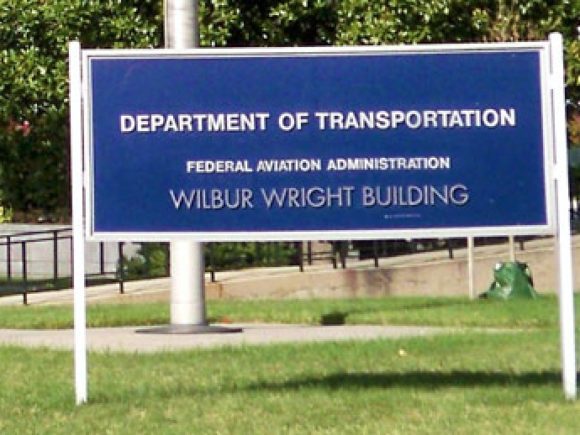
The FAA has shed more light on the electrical issues of the MAX. The regulator released an Airworthiness Directive (AD) on April 30, which specifies the extent of the problems in the cockpit area of the Boeing.
In a Continued Airworthiness Notification to the International Community on April 22, the agency said that the issue affects 106 aircraft that need checks and repairs to prevent inadequate grounding of a power control unit could lead to a short circuit.
The AD covers aircraft from Line Number 7399 through 8082 “with an original airworthiness certificate or original export certificate of airworthiness issued on or before April 9, 2021.”
“The issue affects certain Boeing Model 737-8 and 737-9 airplanes manufactured after the design changes were implemented.” LN7399 is a MAX 8 for Canadian airline WestJet that was delivered on February 27, 2019. This was some two weeks prior to the MAX grounding, which followed on the crash of an Ethiopian MAX 8. In October 2018, a Lion Air MAX 8 had also crashed. In both crashes, 346 occupants lost their lives. Regulators grounded the aircraft until December last year, when the FAA was the first to allow a return to service but only after an extensive review of the aircraft and maligned MCAS system and changes to the training procedures. The modifications are described here.
Insufficient bonding of metallic support panel assemblies
After the ungrounding, Boeing has redelivered 85 MAX -8s and -9s from its inventory. It was only in April this year that the electrical issue was identified. The AD says: “The FAA has received a report of an electrical bonding and grounding issue that was discovered during testing of a newly manufactured Boeing Model 737-8 airplane. During standard production testing by Boeing, electrical power systems did not perform as expected. Investigation identified insufficient bonding of certain metallic support panel assemblies installed in two areas of the flight deck, which affects the electrical grounding of installed equipment. The reported event occurred prior to delivery of that airplane. Investigation identified design changes to the flight deck support panel assemblies, which affected the dedicated bonding and grounding paths that existed prior to the
changes”
Boeing reported the issue to the FAA on April 7. At the time, the airframer provided only limited information on the issue. In a statement that day, it said: “The recommendation is being made to allow for verification that a sufficient ground path exists for a component of the electrical power system.” The FAA told Bloomberg that the issue “could affect the operation of a backup power control unit.”
Later, The Seattle Times reported that the issue involves a backup electrical power unit, which instead of being secured by rivets is using fasteners to keep it in place. This resulted in a potentially unsafe situation, as the unit is insufficiently grounded. This could lead to a malfunction of other systems, including potentially the auxiliary power unit (APU). The information released on April 22 says that the potential issue includes not only the backup power control unit, but also the P6 circuit breaker panels, and main instrument panels in the cockpit.
The prototype of the MAX 9, here at the 2017 Paris Airshow. (Richard Schuurman)
‘Risk to flying public justifies forgoing notice’
In the AD in which the FAA sheds more light on the issues, the agency specifies that “the affected areas are the P6 panel assembly, including the mounting tray for the standby power control unit (SPCU), located behind the first officer, and the main instrument panel (MIP)
assembly located in front of and between the captain and first officer.” It continues: “Without dedicated grounding paths implemented by design, there is a potential for degradation or loss of the existing uncontrolled ground paths on those airplanes over time. (…) The FAA has found that the risk to the flying public justifies forgoing notice and comment prior to the adoption of this rule because degradation of bonds essential for the electrical grounding of equipment could affect the operation of certain systems, including engine ice protection, and result in loss of critical functions and/or multiple simultaneous flight deck effects,
which may prevent continued safe flight and landing.”
The solution to the problem is a modification that takes only a few hours or days at the most. On 71 affected that are affected in the US, this would cost airlines some $155.000. “This AD requires modifying the electrical bonding of certain support panel assemblies installed in the flight deck to provide sufficient electrical grounding for equipment installed in the flight deck. The manufacturer is currently developing service information for a modification that will address the unsafe condition identified in this AD. Once this service information is developed, approved, and available, the FAA intends to approve that service information as a method of compliance for the requirements of this AD.” The FAA has opened the AD for comments until June 14.
Boeing has paused MAX deliveries
Until a fix is found, Boeing has paused deliveries of the MAX, CEO David Calhoun said during Wednesday’s investor’s call. Airlines can continue operating the type if it has been confirmed that they are free of the issue. This restricts the grounding to 106 MAX 8s and 9s, of which some two-thirds of 71 are operated by US-based airlines and others in Europe, India, China/Asia, and Latin America.
On April 9, Southwest Airlines said it would remove thirty MAX 8s from service for checks and repairs, out of 58 active aircraft with the airline. American would remove seventeen out of 41 aircraft, United sixteen out of thirty in service, and Alaska Air all four in service.
The United Arab Emirates has been the last country to approve the return to service, with flydubai resuming MAX services early in April with the first flight to Pakistan.
No relation to MACS and re-wiring
On April 9, a Boeing spokesperson was quick to stress that the issue is unrelated to MCAS, the system that has played a detrimental role in the two crashes and has been modified since. Neither is there any relationship with the re-wiring of the electrical system that drives to the horizontal stabilizer motor.
In the original design, the wiring looms were too close together and could trigger a short circuit, resulting in the loss of stabilizer function. After this deficiency was discovered in January 2020, Boeing did a redesign. Re-entry into service of the MAX in December 2020 was conditional to this modification to be executed, the FAA said. Other regulators, including Transport Canada, Brazil’s ANAC, the UK’s CAA, EASA, and GCAA in the UAE have included this condition in their requirements.
Active as a journalist since 1987, with a background in newspapers, magazines, and a regional news station, Richard has been covering commercial aviation on a freelance basis since late 2016.
Richard is contributing to AirInsight since December 2018. He also writes for Airliner World, Aviation News, Piloot & Vliegtuig, and Luchtvaartnieuws Magazine. Twitter: @rschuur_aero.






